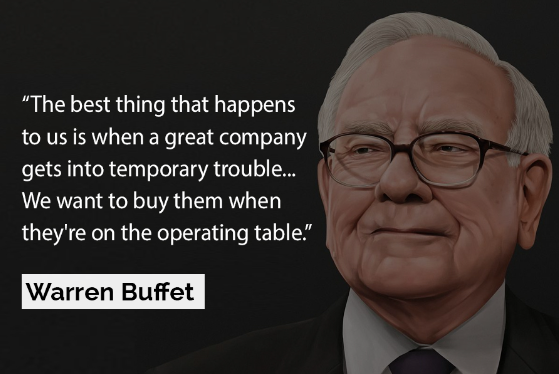
If you’re not growing, you’re dying.
Businesses need at least a modicum of growth to push back against the relentlessness of cost inflation. And then there are cost of capital and opportunity cost hurdles one must consider.
Furthermore, if you’re standing still, there’s a chance your competitors aren’t — which means you’re bleeding market share and relevance.
Stagnation is also a morale killer, and a business will tend to lose its best and brightest if it can’t offer the prospects for bigger and better things down the track.
It may be a slow death, but that’s the ultimate fate for any business that can’t meaningfully increase its cash flows, on average and over time. (That’s not to say a bad year or two sounds the death knell for a company — even the best operations tend to progress via a two-step forward, one-step backward progression.)
So, yeah, growth is kinda important.
From the investors’ perspective, growth is the fuel that underpins the very best returns. There’s a reason why, say, Altium (ASX:ALU) delivered shareholders a >25x return over the last decade, while Telstra (ASX:TLS) investors barely broke even, even with dividends included.
So it’s natural that growth is what we all chase. And it’s what all CEOs try to deliver. Nevertheless, the pursuit of growth is perhaps the biggest factor in shareholder value destruction.
Here’s the problem: just because a company desires growth, it doesn’t mean it will achieve it. In fact, more often than not, it won’t. Not (necessarily) because of malfeasance or incompetence, but largely because business is hard. Like, really, really hard!
Moreover, as the old saying goes, you have to spend money to make money. Be it expanded facilities, increased headcount or any number of necessary additional expenses, growth generally doesn’t just materialize out of nowhere.
So all that most growth initiatives tend to do is take money out of shareholders’ pockets — either as foregone dividends, increased interest expense or through capital raises. At worst, you can ‘grow yourself broke’.
Dick Smith is a good example. After being acquired by private equity firm Anchorage Capital Partners in 2012, it embarked on an aggressive expansion strategy. Fuelled by massive levels of debt, it rapidly rolled out new stores and loaded up on inventory.
44 years of success was undone in just a few short years — all in the pursuit of greater growth.
The point is, Dick Smith wasn’t some rare outlier. ABC Learning, Oroton, Gunns, Forge Group, Arrium, HIH Insurance — and a whole lot more besides — can tell a similar story. The list is significantly expanded if you also include companies that didn’t go bust, but were nonetheless significantly hobbled by management’s hubristic pursuit of growth.
So, how does an investor reconcile the necessity of growth with the frequent failure of growth initiatives? There’s no easy answer, but several considerations can help navigate this dilemma.
Firstly, beware of the company that is perpetually on the cusp of growth — a “gunna” company. These operations tend to jump from one initiative to the next without ever creating real shareholder value. (Insiders, on the other hand, still come out ahead thanks to misaligned and generous remuneration schemes.)
Secondly, consider where the growth is expected to come from. Growth that leverages an existing competitive advantage, such as a strong brand, robust distribution network, or intellectual property, is generally a safer bet than that which is pursued in areas outside of the company’s wheelhouse.
Harvey Norman’s (ASX:HVN) 2015 investment in dairy farms must surely stand as one of the most ill-conceived forays in Australian corporate history. Ultimately, it cost shareholders over $60 million. Go Harvey, Go!
Another potential red flag is overly ambitious growth projections. The more aggressive and hubristic the growth target, the more cautious you should be. Extraordinary growth opportunities are rare, and even then they tend to surprise the instigators themselves.
Incremental growth, while less exciting, is often far more sustainable and reliable. And this type of growth is far less reliant on external sources of funding.
Lastly, and perhaps most dangerous of all, is growth via acquisition.
These deals will certainly boost revenues, but the per share earnings benefits tend to be far, far less common. Of course, it’s good for the egos of insiders that can stand atop a much larger business (which, in turn, helps justify a much larger pay cheque — especially, as is common, if certain performance hurdles are tied to things like EBITDA), and it’s fantastic for the investment bankers that get to levy some hefty fees.
The common shareholder, however, isn’t usually better off when all is said and done.
A good example here may be Domino’s Pizza (ASX:DMP). The company absolutely crushed the competition here in Australia and delivered exceptional returns for shareholders… at least for a time. Things started to go awry following a move into Asian and European markets — and this from a leadership team that had a solid track-record and that was sticking to its core competencies.
So, by all means go for growth. But tread carefully.
Strawman is Australia’s premier online investment club.
Members share research & recommendations on ASX-listed stocks by managing Virtual Portfolios and building Company Reports. By ranking content according to performance and community endorsement, Strawman provides accountable and peer-reviewed investment insights.
Disclaimer– Strawman is not a broker and you cannot purchase shares through the platform. All trades on Strawman use play money and are intended only as a tool to gain experience and have fun. No content on Strawman should be considered an inducement to to buy or sell real world financial securities, and you should seek professional advice before making any investment decisions.
© 2024 Strawman Pty Ltd. All rights reserved.
| Privacy Policy | Terms of Service |
ACN: 610 908 211






